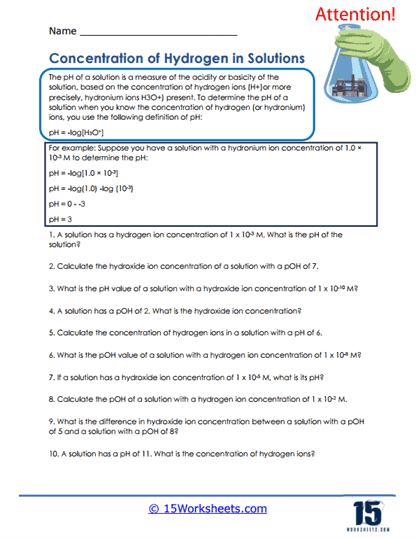Concentration of Hydrogen in Solutions

Worksheet Description
The worksheet is focused on the understanding of pH and pOH in relation to the concentration of hydrogen (H+) and hydroxide (OH-) ions in solutions. It emphasizes how to compute pH and pOH values from ion concentrations and vice versa.
The primary goals of this worksheet are:
To understand the definitions and importance of pH and pOH.
To learn how to calculate pH, pOH, and related ion concentrations using the given formulas.
Concepts
pH – It’s a logarithmic measure of the acidity or basicity of a solution, based on the concentration of hydrogen ions ([H+]). The pH scale ranges from 0 (highly acidic) to 14 (highly basic).
pOH – This measures the basicity of a solution based on the concentration of hydroxide ions ([OH-]). Like the pH scale, it also ranges from 0 to 14.
Relationship between pH and pOH – In an aqueous solution at 25°C, the sum of its pH and pOH values will always equal 14.
Start by understanding the formulas given for calculating pH and pOH. Know that the negative logarithm of an ion concentration gives its pH or pOH value.
Consistently practice problems that involve converting between pH, pOH, and ion concentrations. The more you practice, the more proficient you’ll become.
